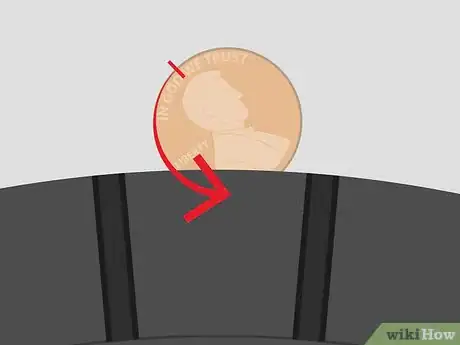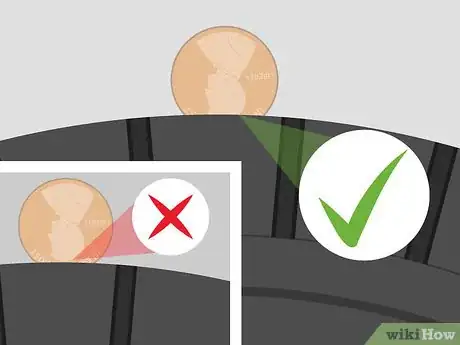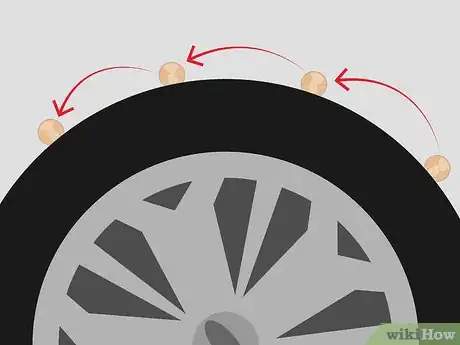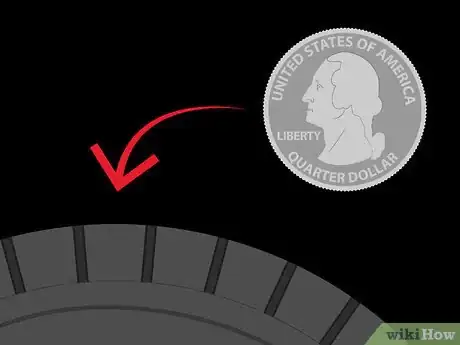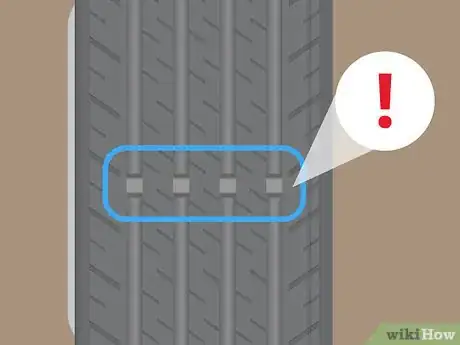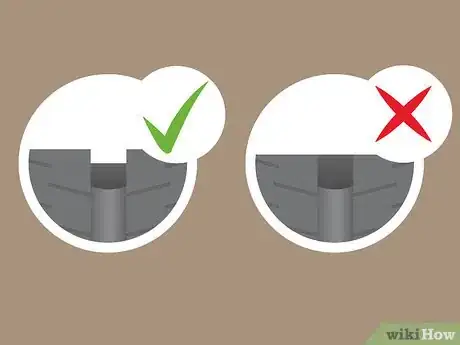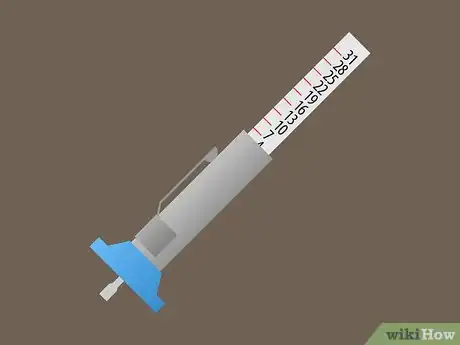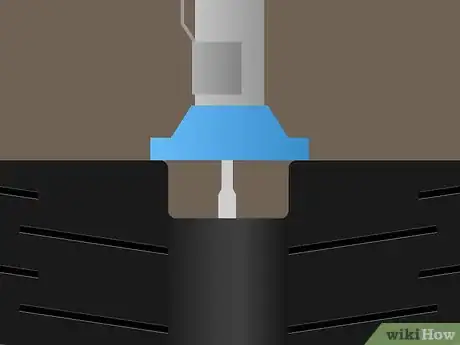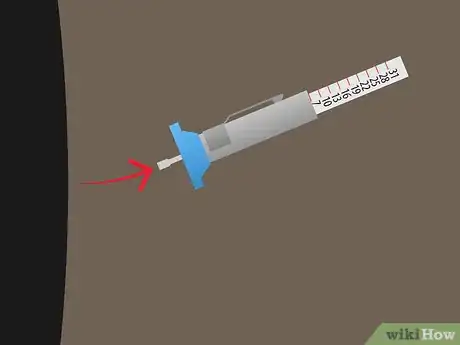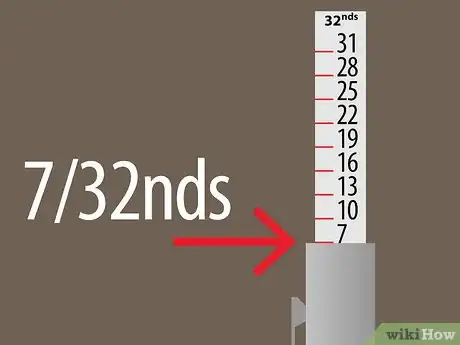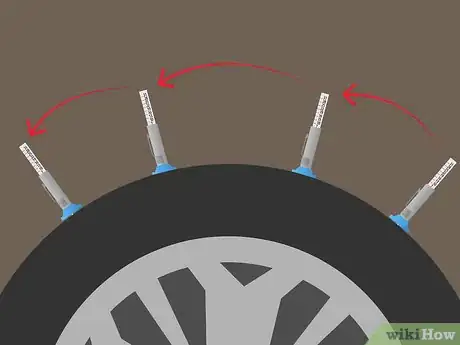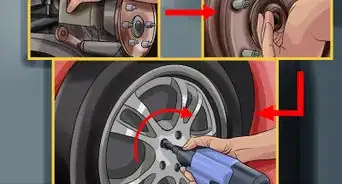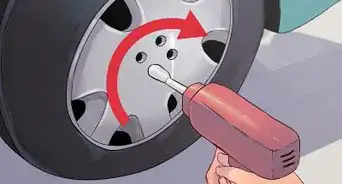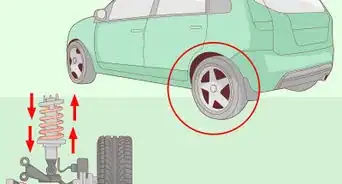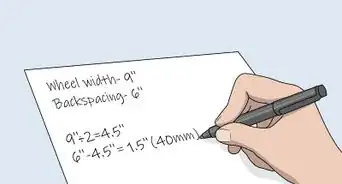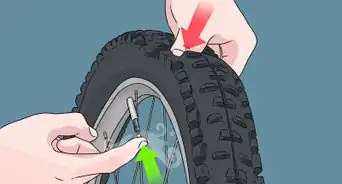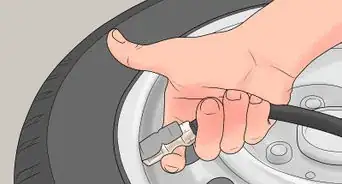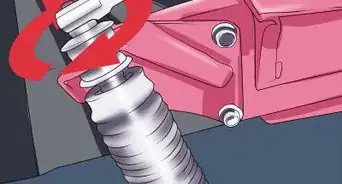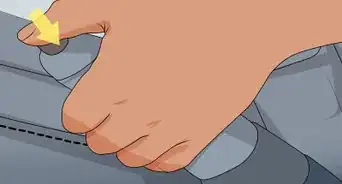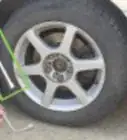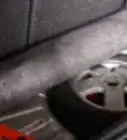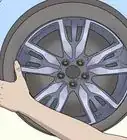wikiHow is a “wiki,” similar to Wikipedia, which means that many of our articles are co-written by multiple authors. To create this article, volunteer authors worked to edit and improve it over time.
This article has been viewed 39,375 times.
Learn more...
A tire becomes legally worn out when its tread depth reaches two thirty-second (2/32) of an inch, according to most jurisdictions throughout North America. To lower your risk for vehicular accidents associated with low tire tread, check your tire tread using the penny test, the quarter test, by examining the treadwear indicator bars molded into your tires, or using a tread depth gauge.
Steps
Using the Penny Test
-
1Place a penny into any tread groove on your tire.
-
2Rotate the penny so Abraham Lincoln’s head is upside down and inside the tread.[1]Advertisement
-
3Determine whether you can see Lincoln’s entire head when the penny is inserted into the tread groove. Your tires are considered safe and legal if a portion of Lincoln’s head is covered by the tread. However, if you can see Lincoln’s entire head after inserting the penny into the groove, you may need to replace your tire.[2]
-
4Repeat steps #1 through #3 in various grooves all over your tire. If Lincoln’s head is visible in any groove, the tire may need replacing.
Using the Quarter Test
-
1Place a quarter into any tread groove on your tire.
-
2Rotate the quarter so George Washington’s head is upside down and inside the tread.[3]
-
3Determine whether you can see Washington’s entire head when the quarter is inserted into the tread groove. If a portion of Washington's head is always covered by the tread, your tire has more than four thirty-second of an inch of tread depth remaining, which indicates your tires are still in good condition.[4]
-
4Repeat steps #1 through #3 in various grooves all over your tire. If Washington’s entire head is visible in any groove, you may need to replace the tire.
Examining the Treadwear Indicator Bar
-
1Examine your tire to locate the treadwear indicator bars molded into the tread grooves. These “bars” are located at the bottom of tread grooves in various locations all over your tire, and can help you visibly determine whether your tire tread is low.[5]
-
2Check to see whether the treadwear bars are flush with the adjacent ribs. If so, this means your tire tread measures in at two thirty-second of an inch, and the tire should be replaced.
Using a Tread Depth Gauge
-
1Purchase a tire tread depth gauge from any auto parts store. Most models of tread depth gauges cost between $3 and $8 from any auto parts retail store.
-
2Place the end of the probe into any tread groove on your tire.
-
3Push down on the base of the gauge until the shoulders of the device lie flat against the tread block.
-
4Grab the barrel of the gauge and carefully remove the device from the groove without touching the probe.
-
5Make note of the tread depth reading.
-
6Repeat steps #2 through #5 on various parts of the tire. This allows you to find out whether any grooves in your tire measure higher than two thirty-second of an inch, and whether your tire needs replacing.
References
- ↑ https://www.consumerreports.org/video/view/cars/car-care/5305389891001/autos-tips-checking-tire-tread/
- ↑ https://www.angieslist.com/articles/how-check-tire-tread.htm
- ↑ https://www.consumerreports.org/video/view/cars/car-care/5305389891001/autos-tips-checking-tire-tread/
- ↑ https://www.codot.gov/travel/winter-driving/quartertest
- ↑ https://www.dummies.com/home-garden/car-repair/checking-your-tires-for-wear/
About This Article
To check your tire tread, put a penny into any tread groove upside down so Abraham Lincoln’s head is inside the tread. If you can see all of Lincoln’s head, you may need to replace your tire. You can also perform the same test using George Washington’s head on a quarter. Alternatively, look for the treadwear indicator bars, which are located at the bottom of the tread grooves throughout your tire Then, check if the bar is flush with the adjacent ribs, which means your tire needs replacing. For tips on how to use a tread depth gauge, read on!

